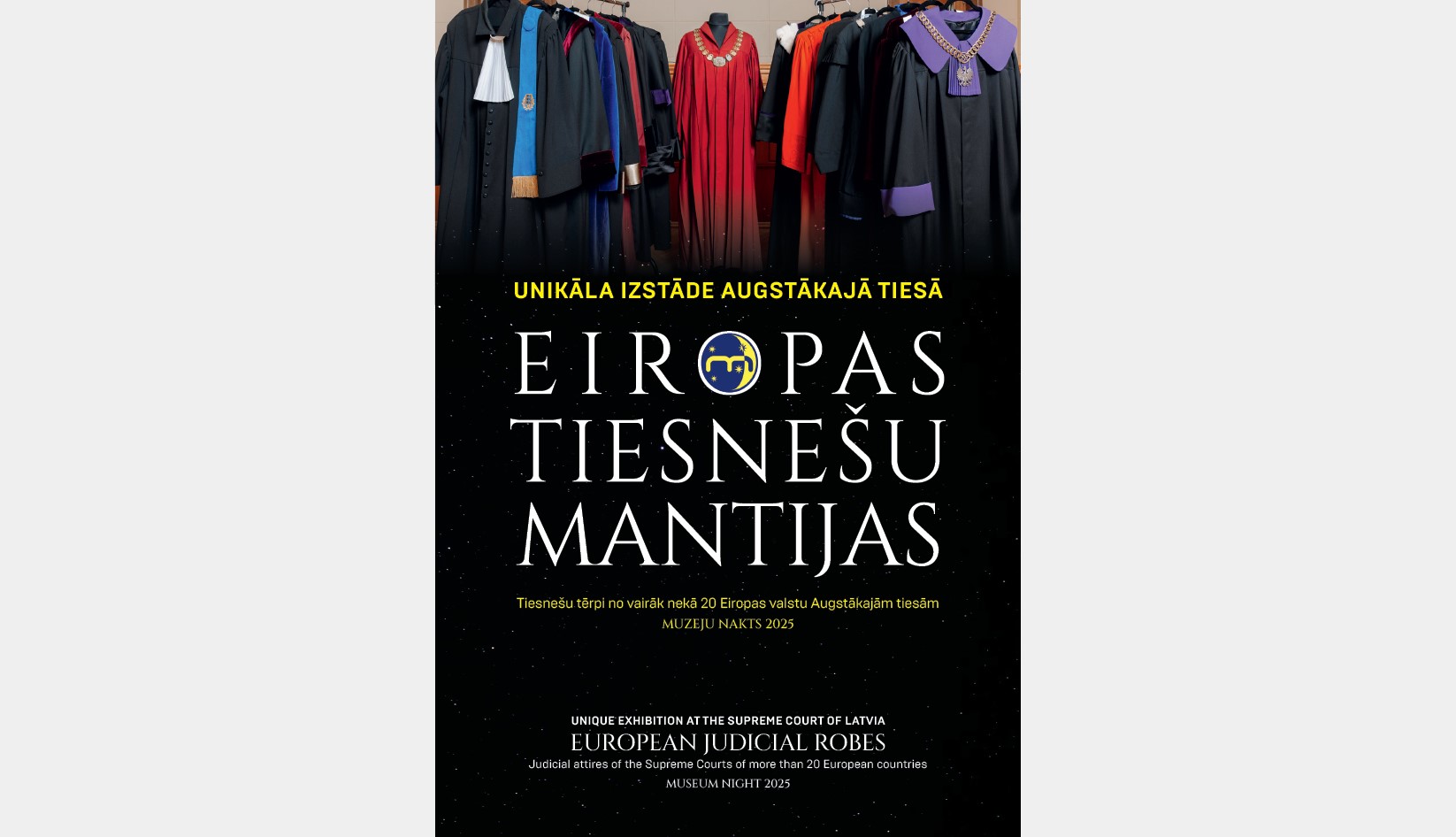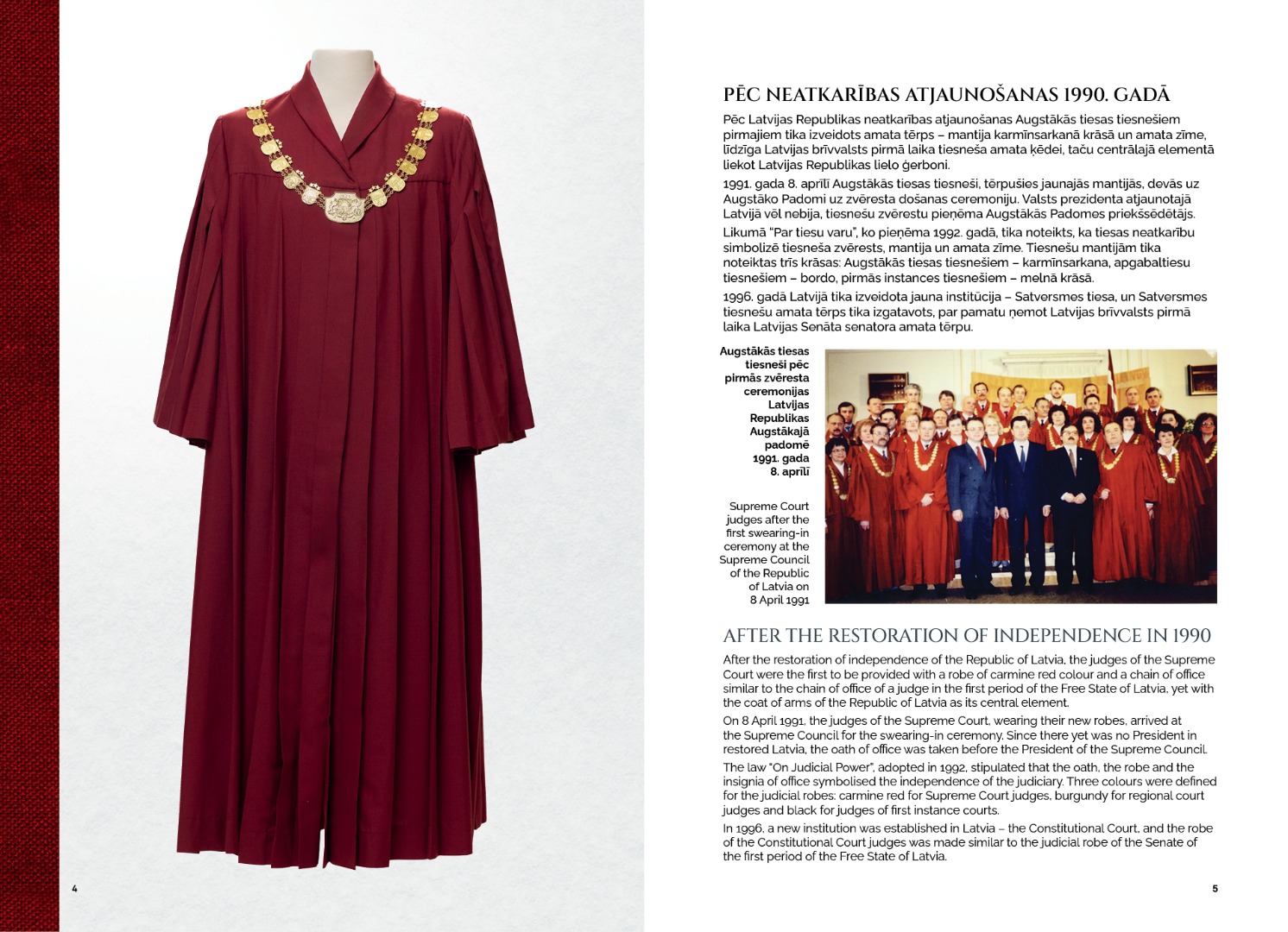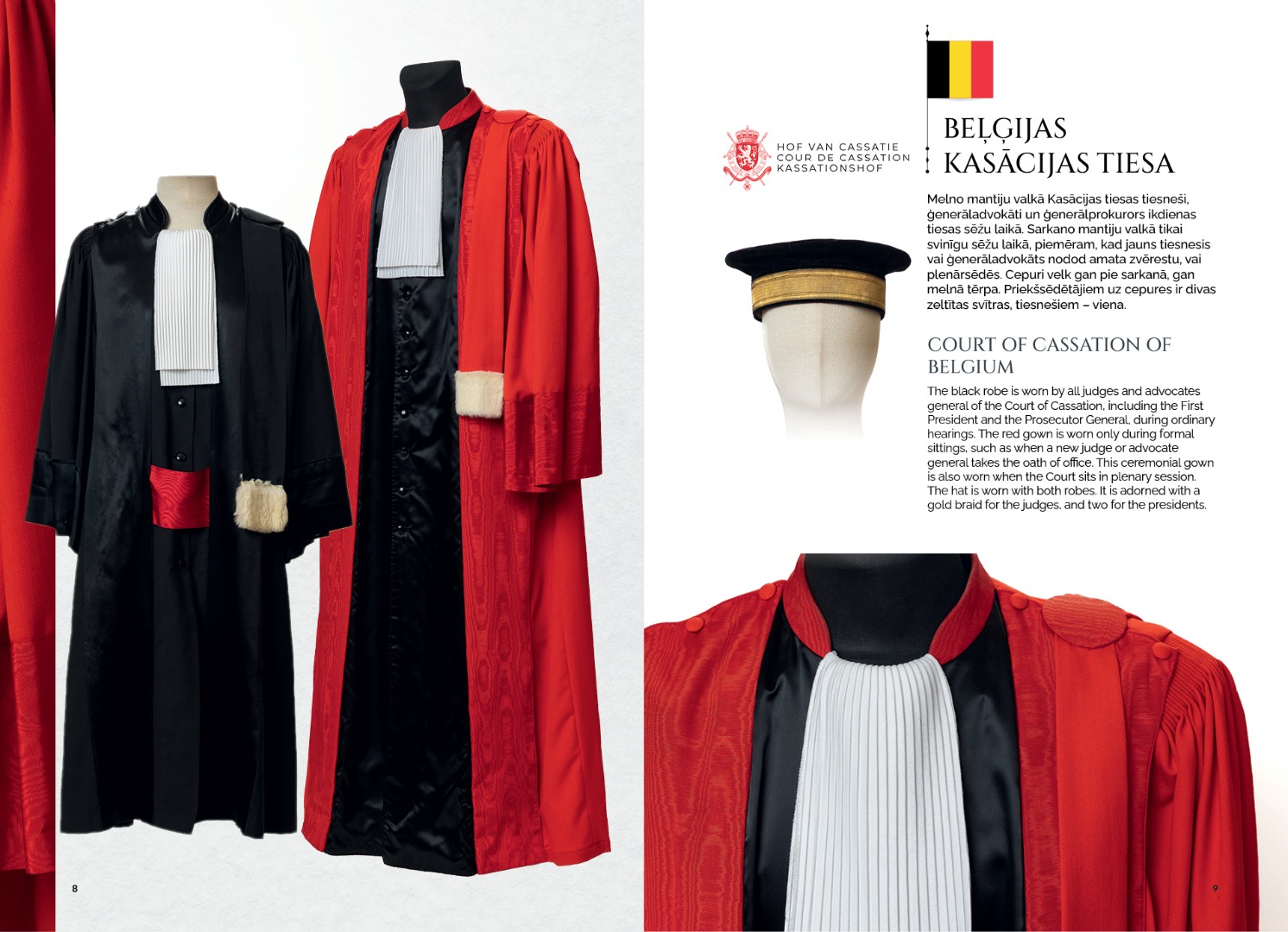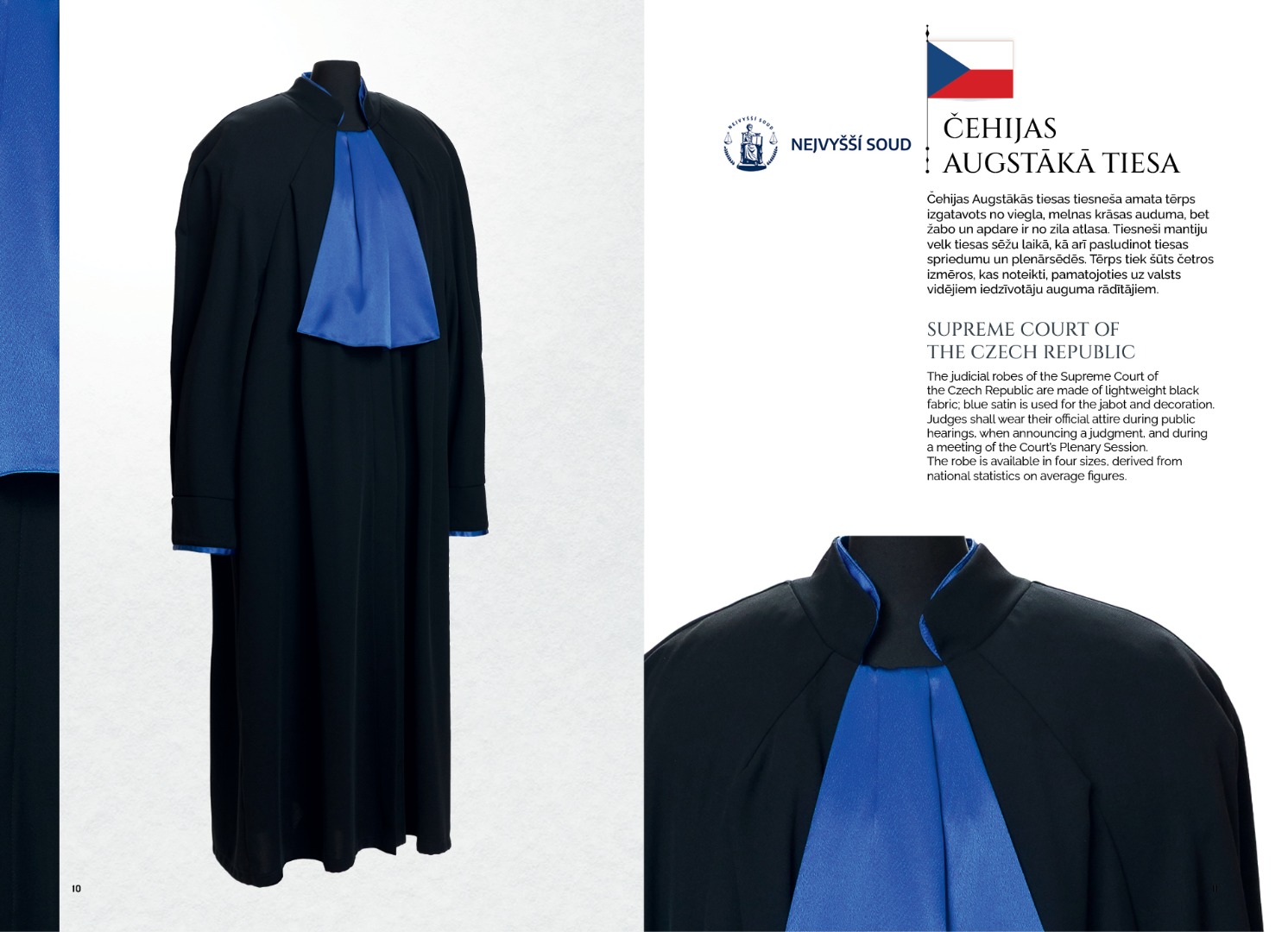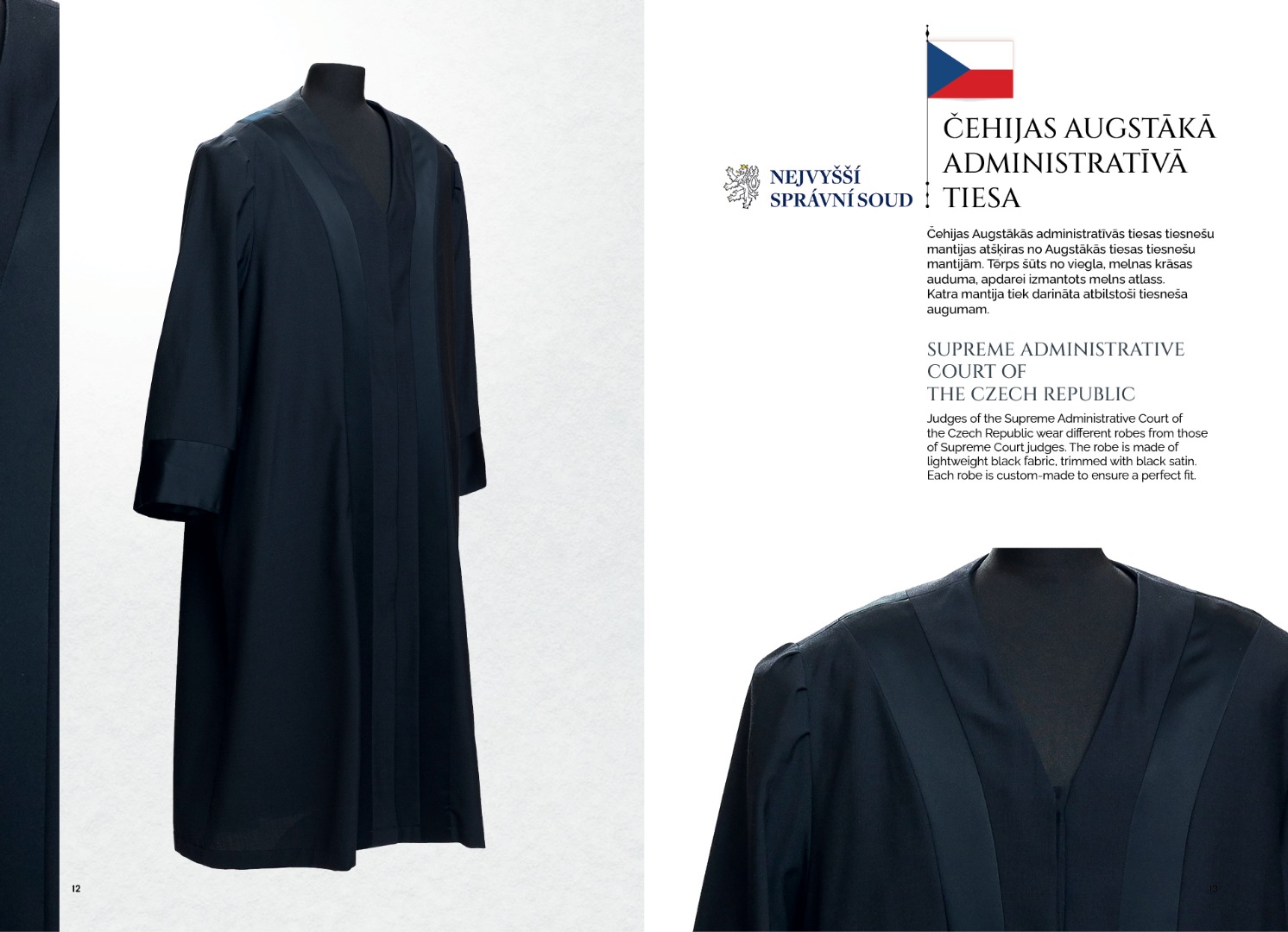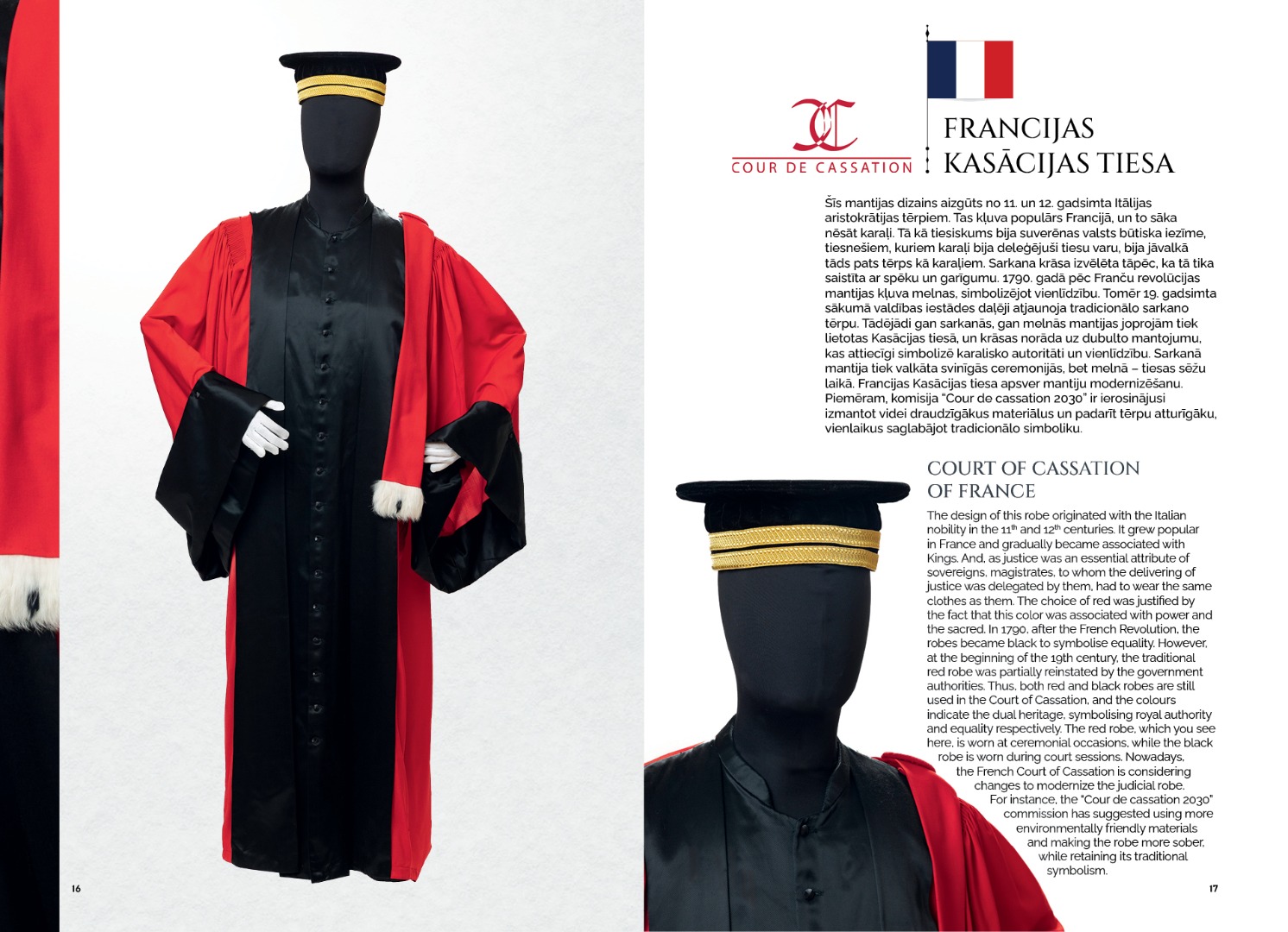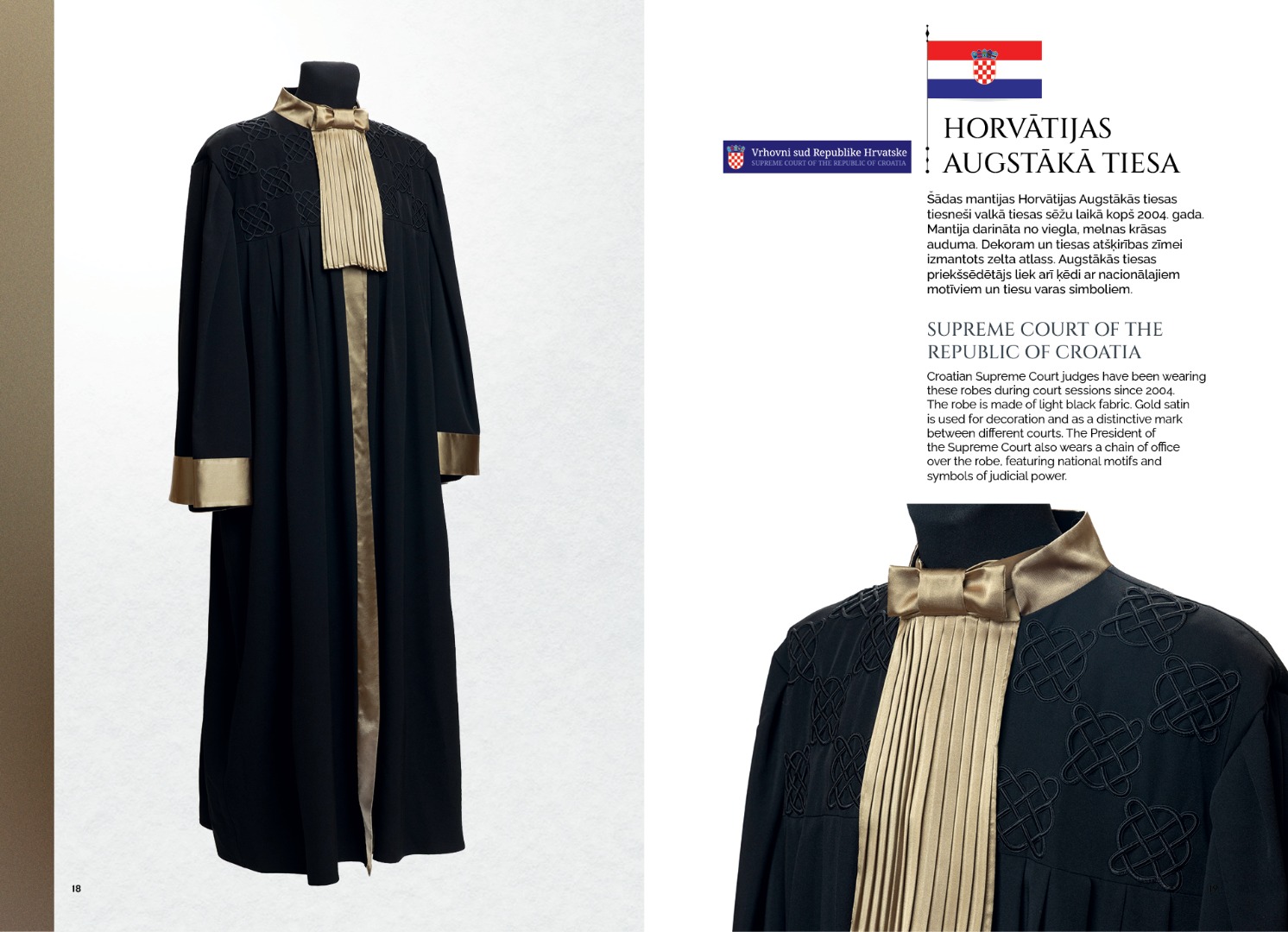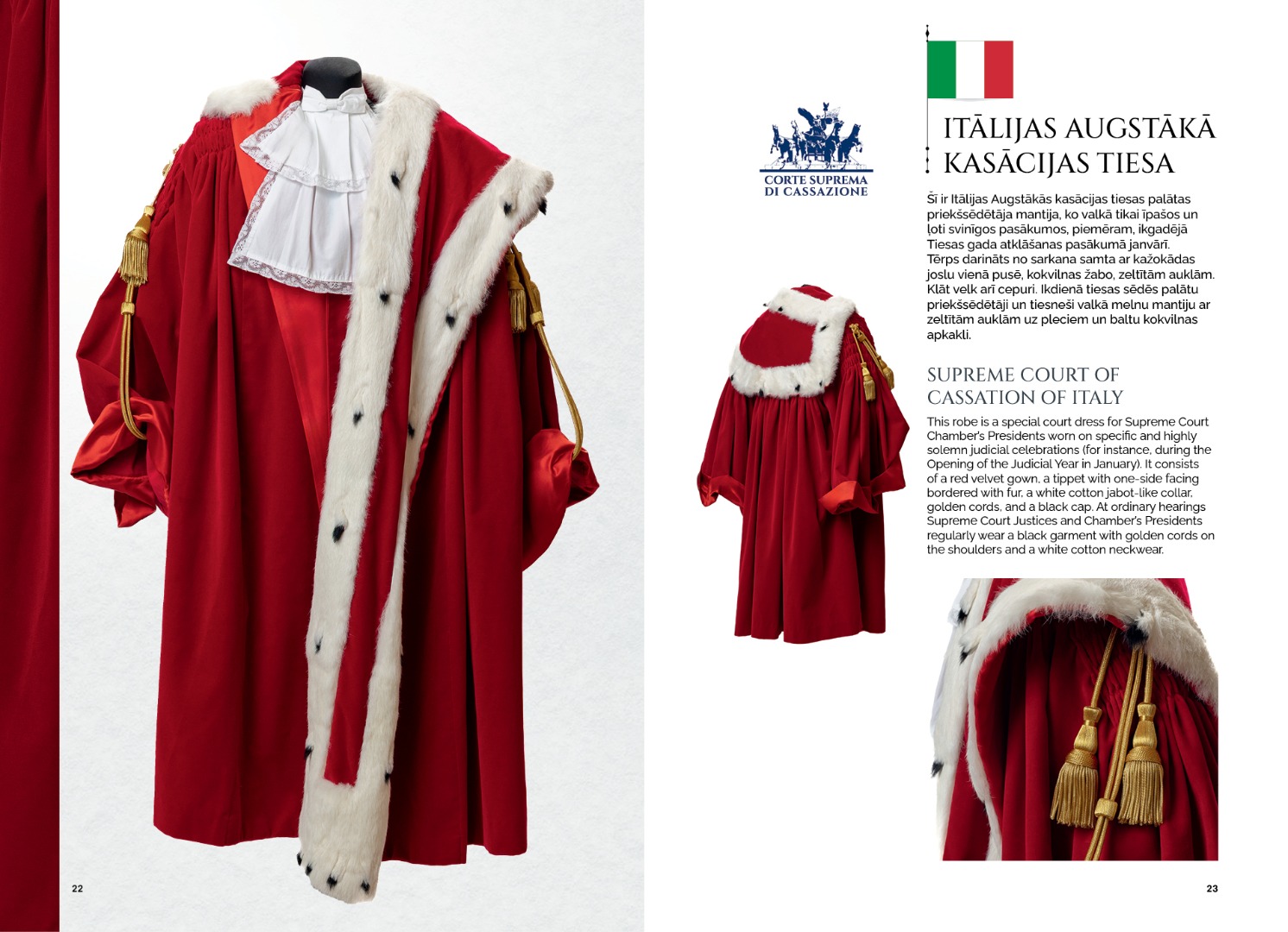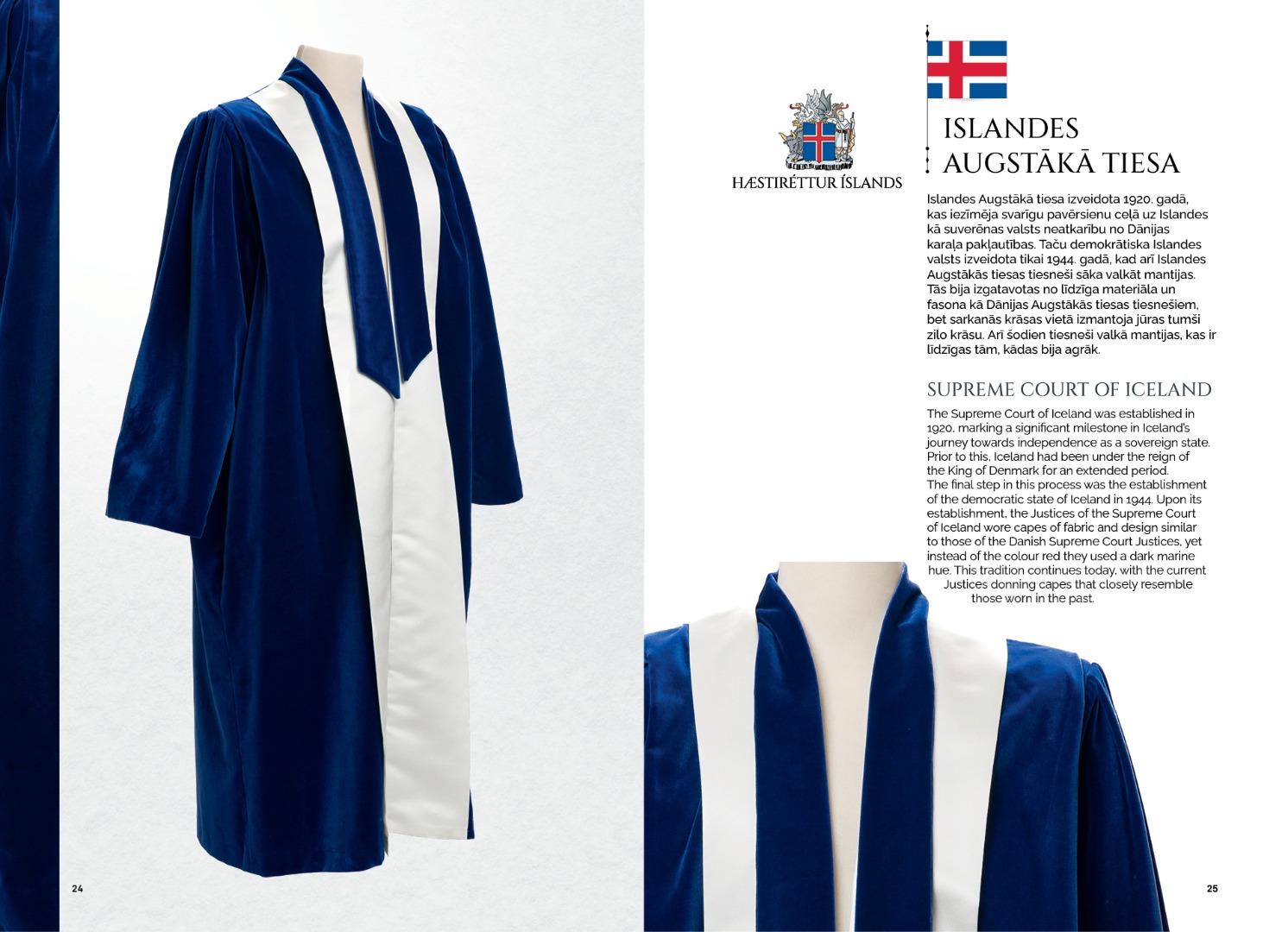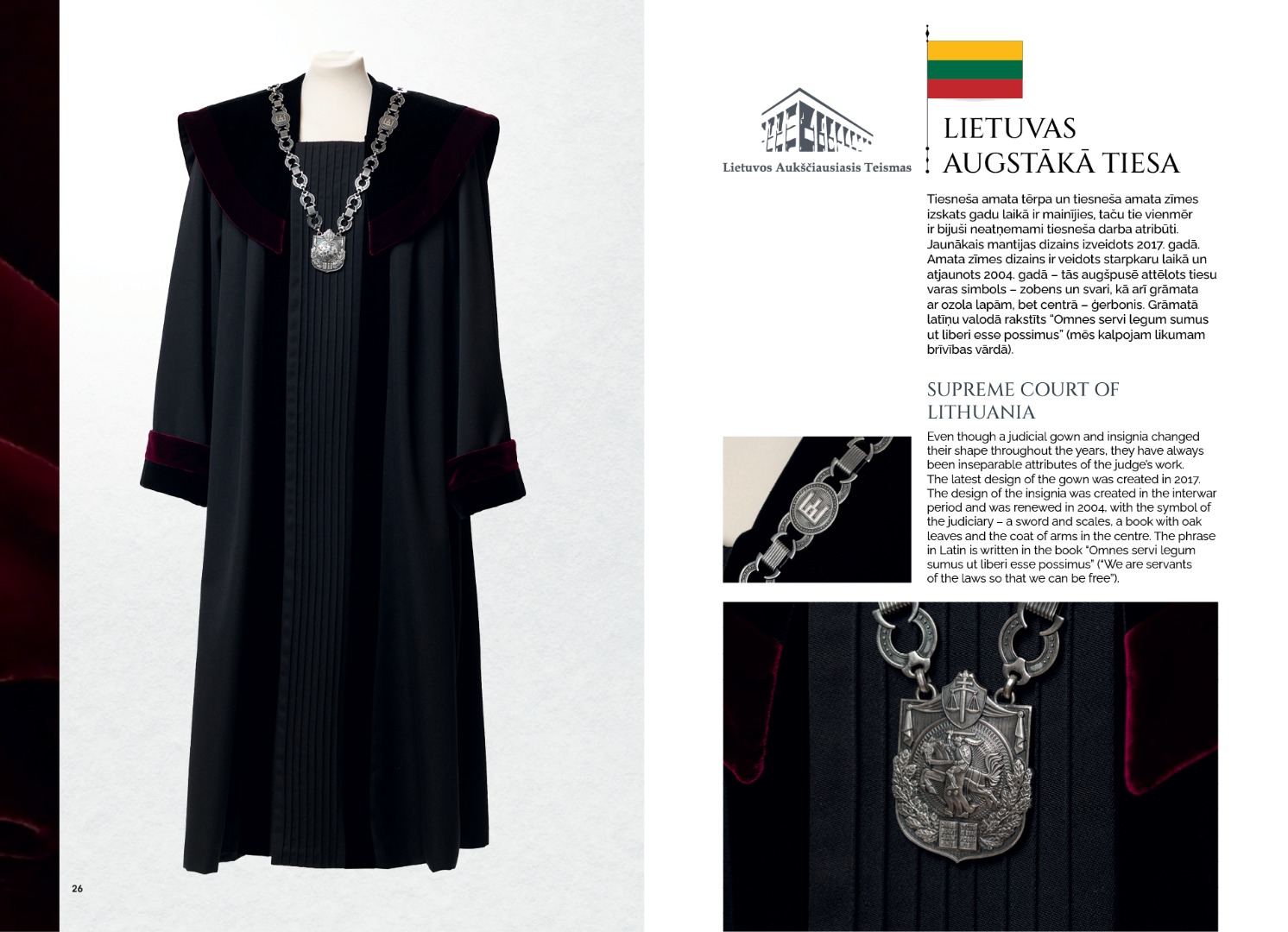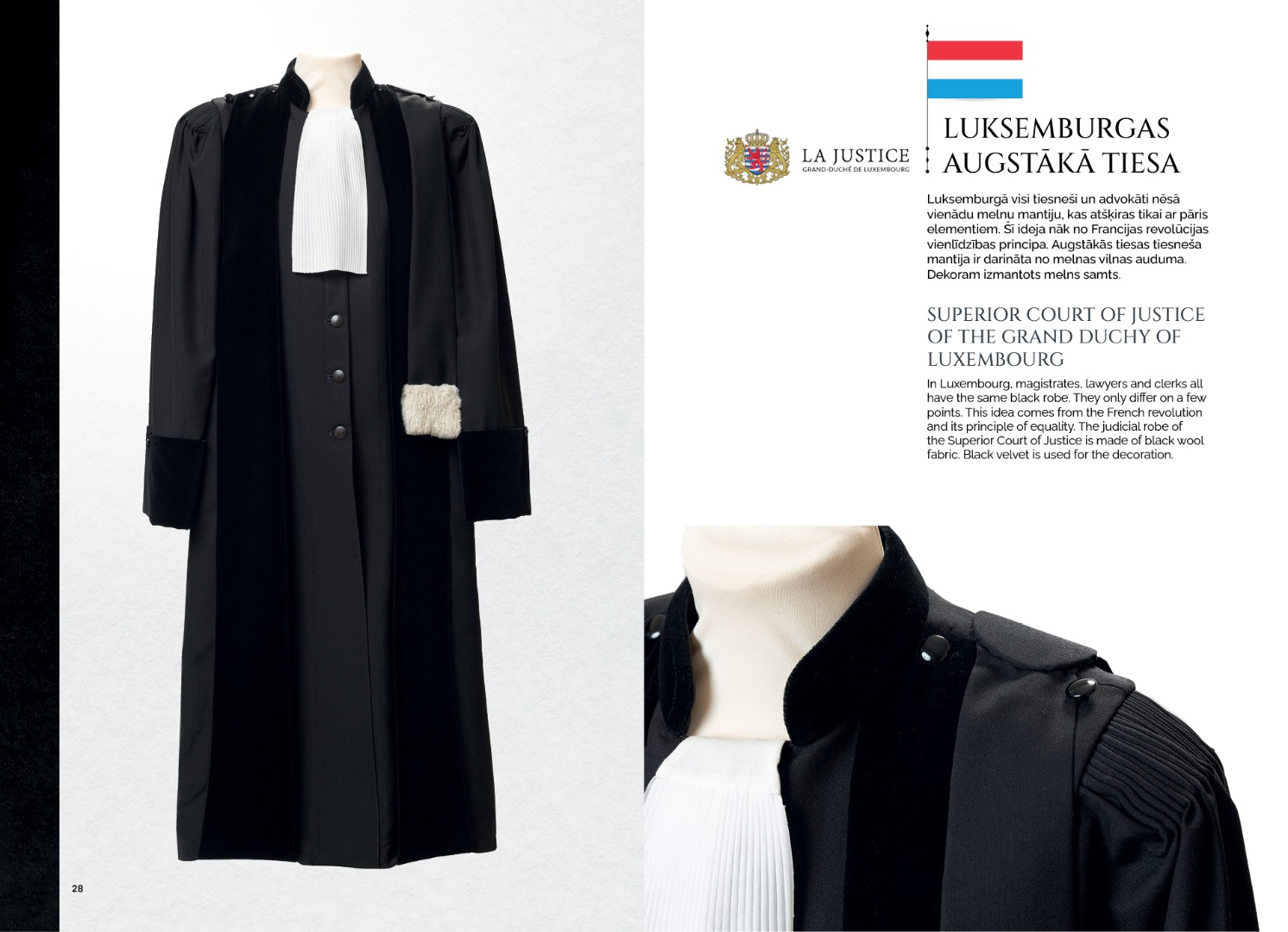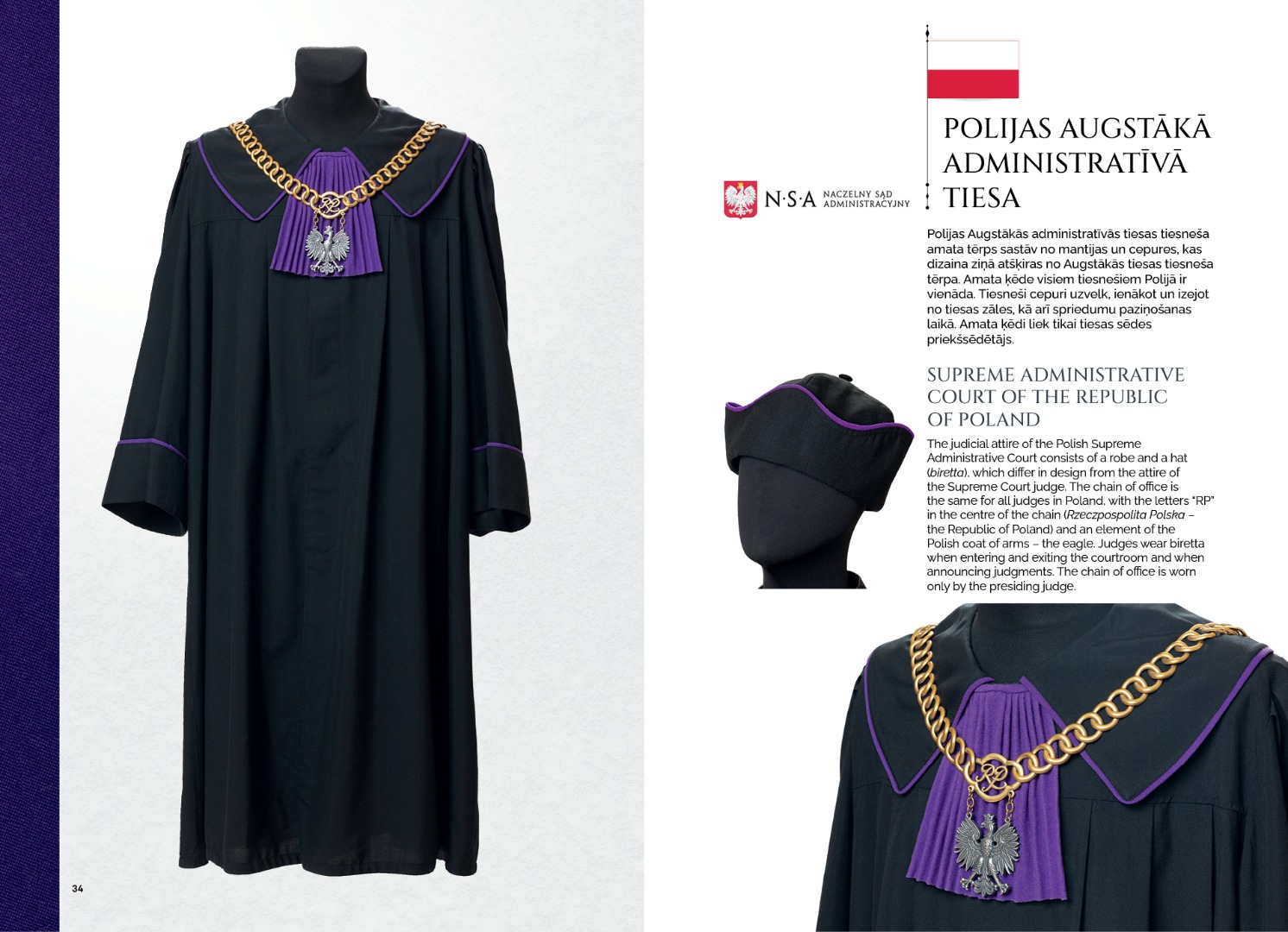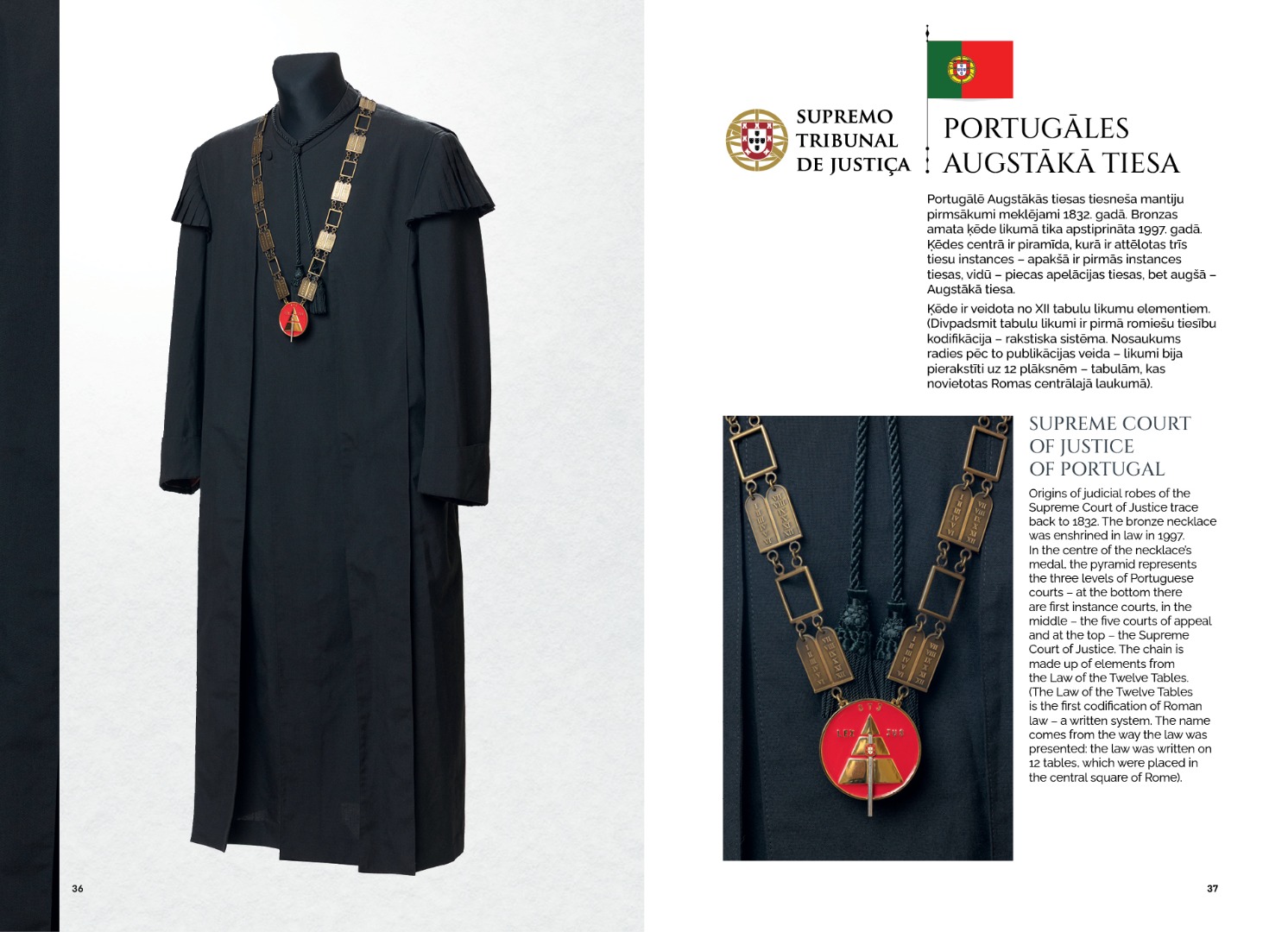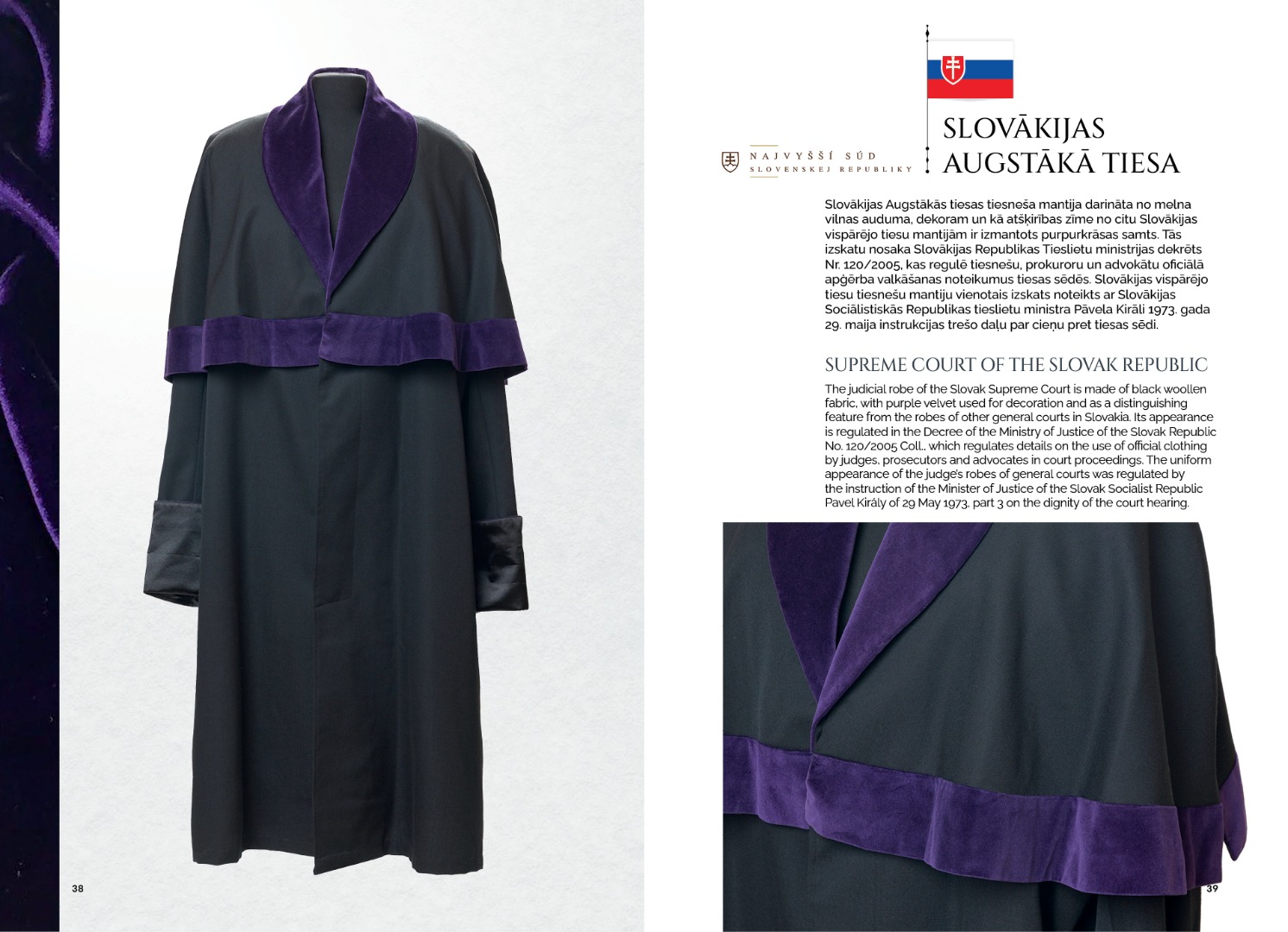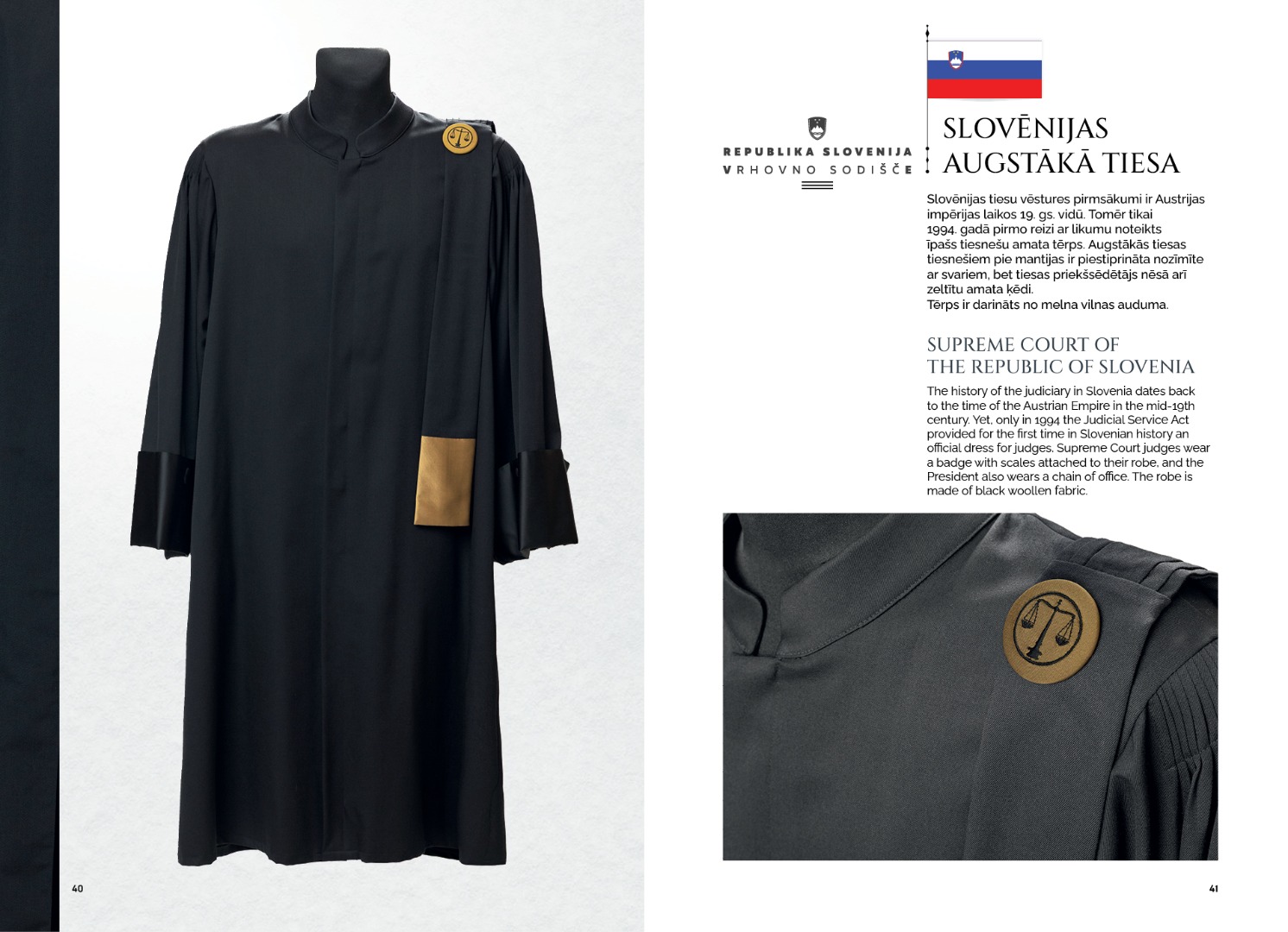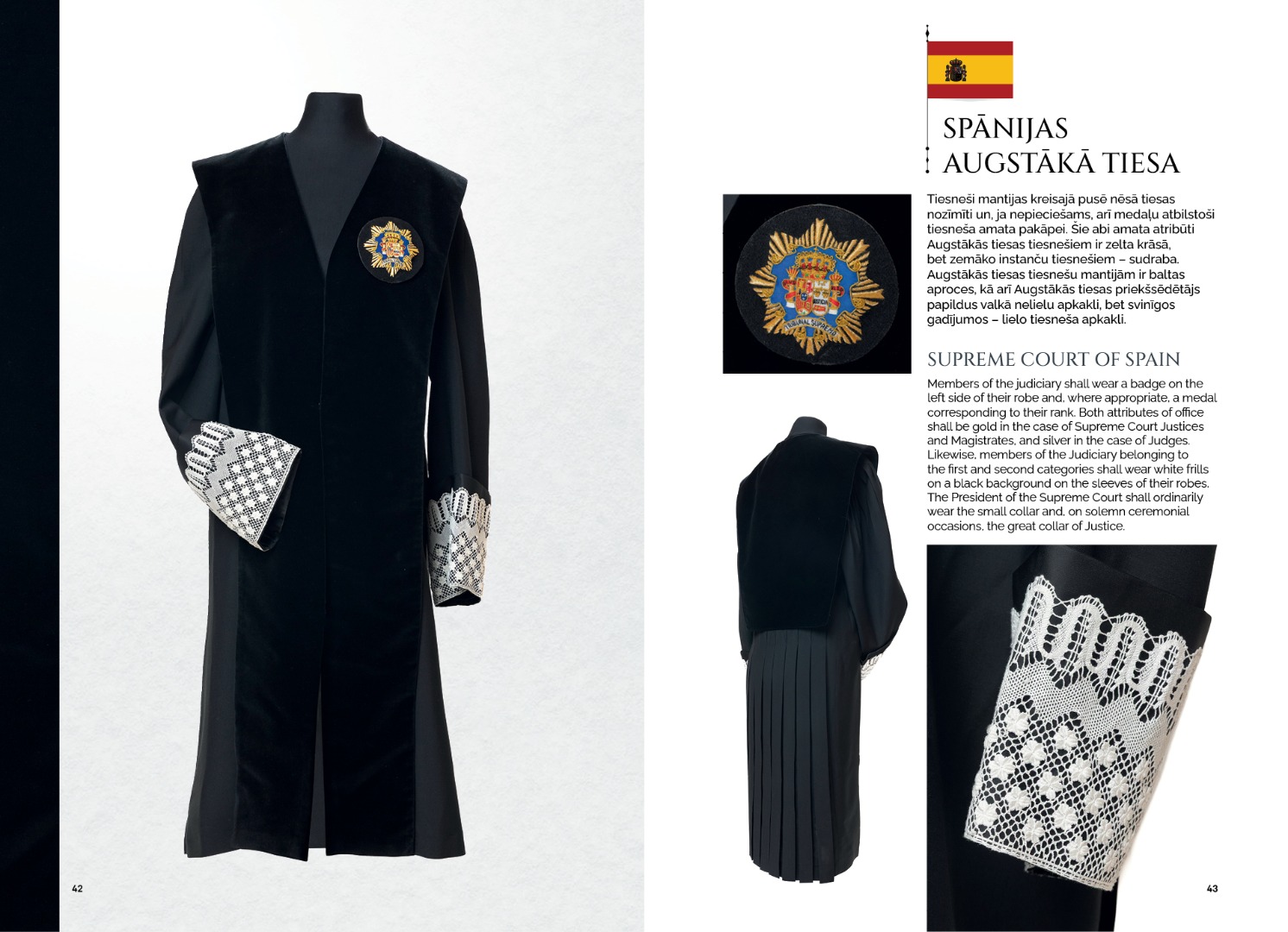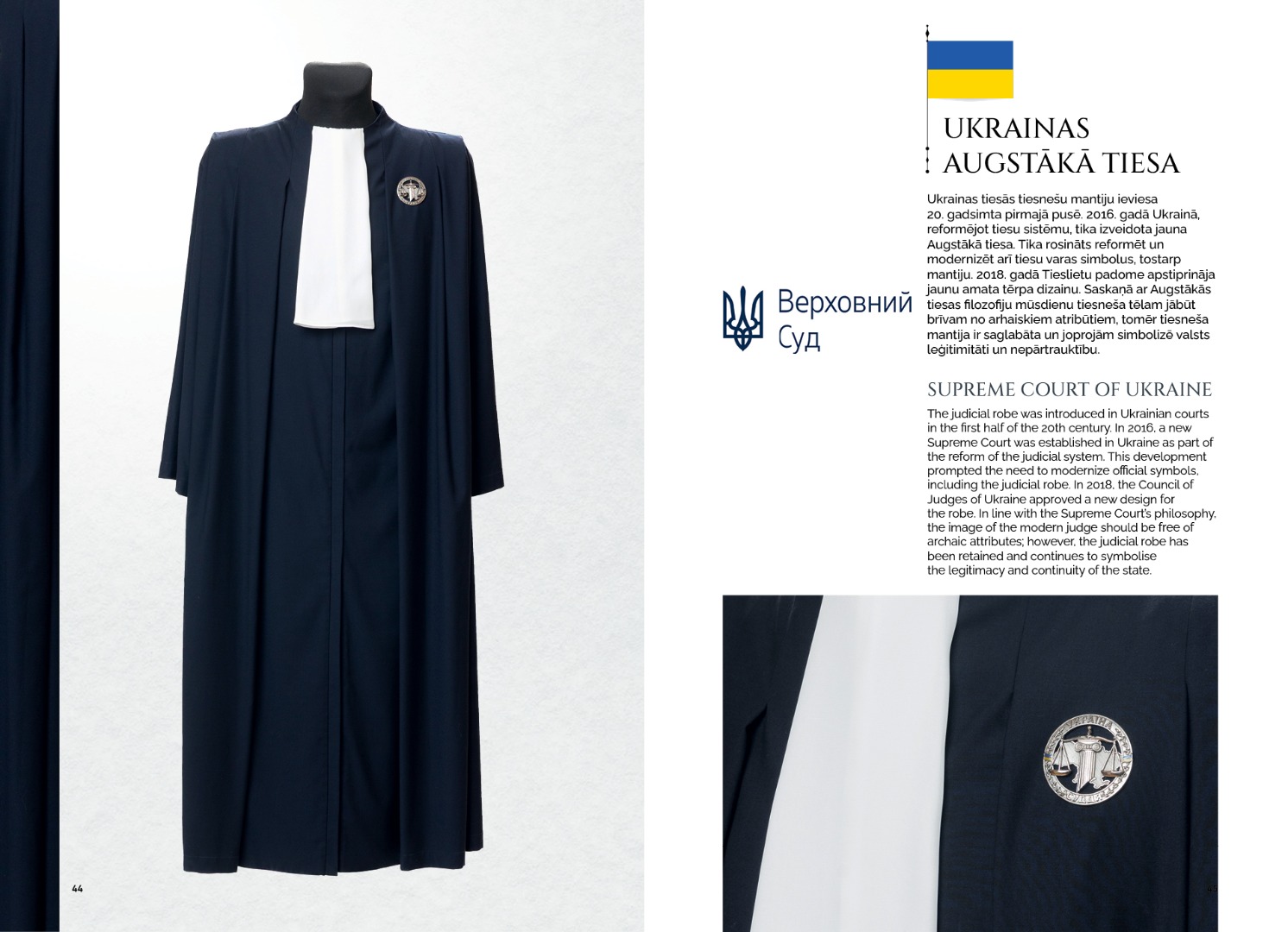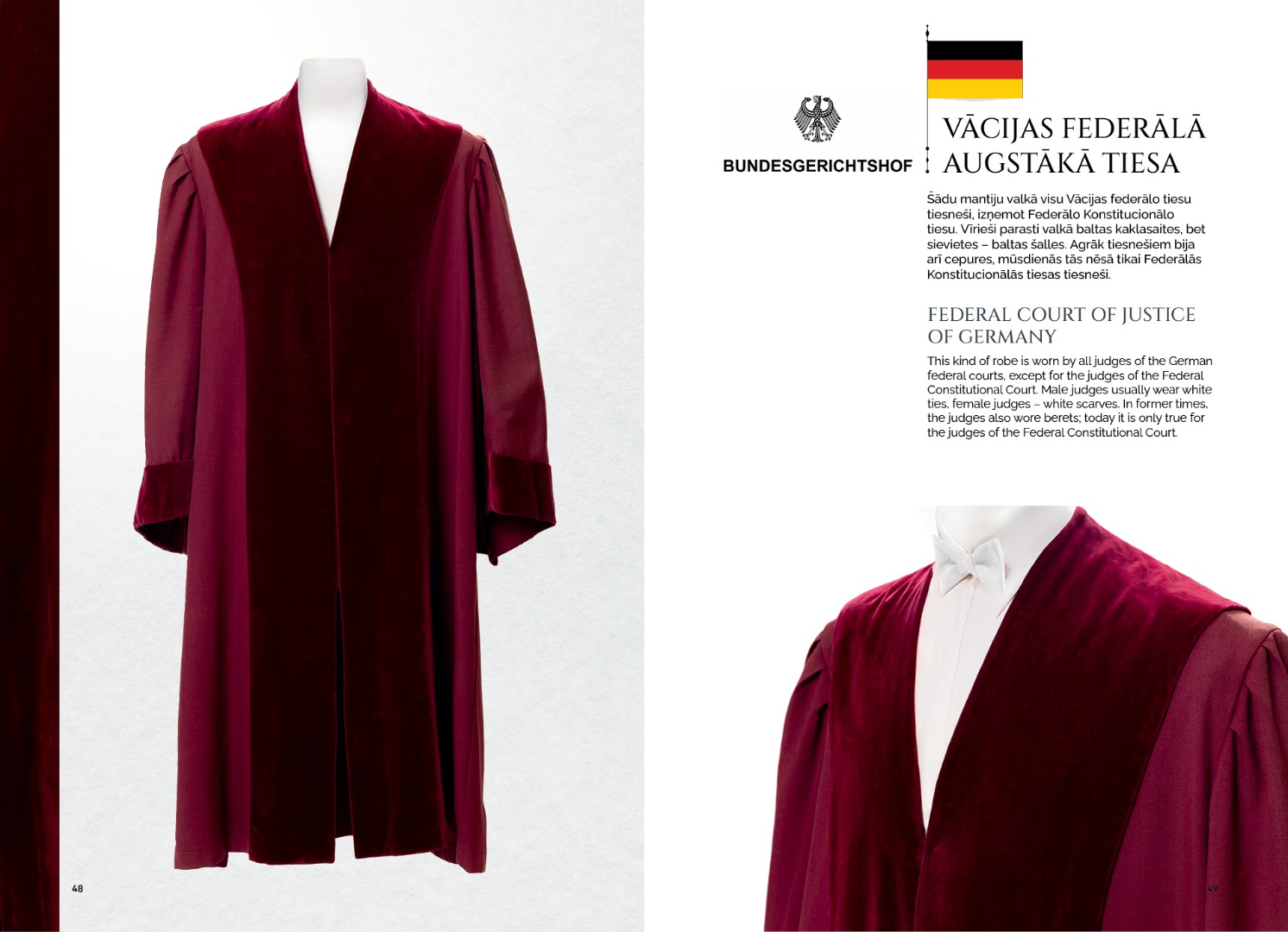17 June, 2025
During Museum Night 2025 and the week that followed, more than 1000 visitors of the Supreme Court viewed the exhibition “European Judicial Robes”. The exhibition catalogue with more detailed information is now available on the Supreme Court's website. The robes of judges of 23 Supreme Courts and Supreme Administrative Courts of European countries in one place – this is a truly unique experience!
The catalogue contains photographs of judicial robes from the courts whose robes were on display: the Supreme Court of Austria, the Court of Cassation of Belgium, the Supreme Court of the Czech Republic, the Supreme Administrative Court of the Czech Republic, the Supreme Court of Denmark, the Court of Cassation of France, the Supreme Court of Croatia, the Supreme Court of Estonia, the Supreme Court of Cassation of Italy, the Supreme Court of Iceland, the Supreme Court of Lithuania, the Supreme Court of Luxembourg, the Supreme Court of the Netherlands, the Supreme Court of Poland, the Supreme Administrative Court of Poland, the Supreme Court of Portugal, the Supreme Court of Slovakia, the Supreme Court of Slovenia, the Supreme Court of Spain, the Supreme Court of Ukraine, the Curia of Hungary, the Federal Court of Justice of Germany, and the Supreme Court of Latvia.
Each judicial attire is accompanied by a brief description of its history, the symbols it bears, or the traditions associated with its wearing. One can see the power of tradition in the similarity and, at the same time, diversity of the symbols of justice.
Īpaša vieta gan izstādē, gan katalogā ierādīta Latvijas Augstākās tiesas tiesneša amata tērpam – ir gan vēsturiskais atskats uz to, kāds bija tiesneša amata tērps Latvijas valsts pirmajā posmā 1918.–1940.gadā, gan to, kā tika veidoti amata tērpi pēc Latvijas neatkarības atjaunošanas.
A special place in both the exhibition and the catalogue is devoted to the robe of a judge of the Supreme Court of Latvia, providing a historical overview of what judicial robes looked like in the first period of the Latvian state from 1918 to 1940, as well as how the robes were designed after Latvia regained its independence.
About the history of judicial robes
The judge’s robe is a symbol of the judiciary, embodying the status and independence of the judge. The robe distances the judge from what is mundane and personal, making him or her impartial and granting him or her the special power to administer justice.
The tradition of judicial robes has its roots in the vestments of priests and ritual symbols of ancient cultures, when justice was administered in temples or sacred places. In the Middle Ages, there were ecclesiastical courts, and priests also participated in city and royal courts since they were educated and knew how to write. Later, university graduates joined the courts as judges, many of them were professors who also wore robes. In the 12th/13th century, robes specifically for judges were established.
When the function of administering justice was taken over by secular authorities, religious ceremonies and the presence of priests in court were rejected. However, various symbols such as temple-like courthouses, rituals of the trial, the judge’s oath, the robe and the insignia of office – were retained to ensure the authority of the court proceedings and the importance of the rituals.
Different countries developed different traditions as to the symbols of the judicial office, including the fabric, colour, and other features of the robes. There are countries where judges’ robes are still decorated with animal skins.
Information prepared by
Rasma Zvejniece, Head of the Division of Communication of the Supreme Court
E-mail: rasma.zvejniece@at.gov.lv, telephone: +371 67020396, +371 28652211


